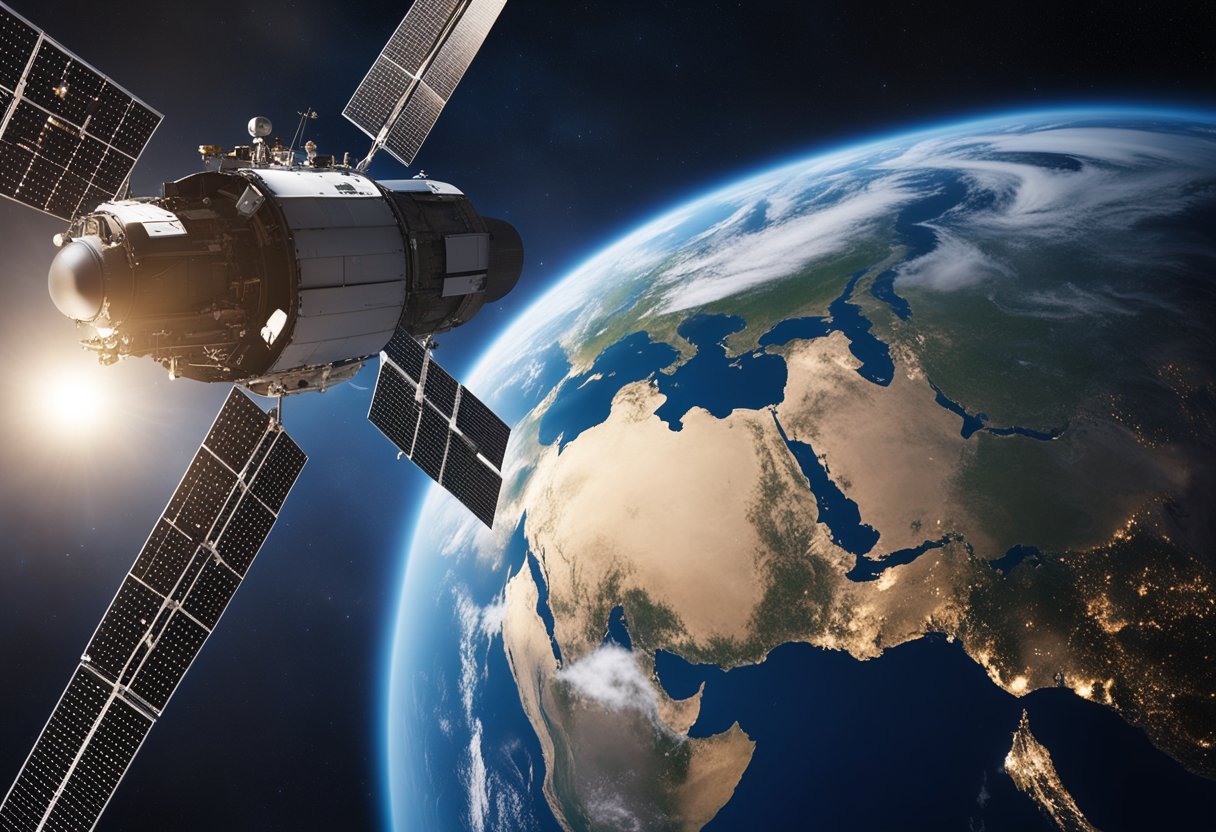
The domain of space technology has seen remarkable accomplishments and continuous innovation since the inception of space exploration. With advancements that have transformed the way we perceive our universe, we have progression that ranges from satellite technology to deep space missions. These innovations have not only aided in understanding the cosmos but have also led to practical applications on Earth, influencing sectors as diverse as telecommunications, navigation, and even medical sciences. Our pursuit of the stars has led to the development of new materials, faster computing, and sustainable life-support systems, all of which serve our species both in space and on our home planet.
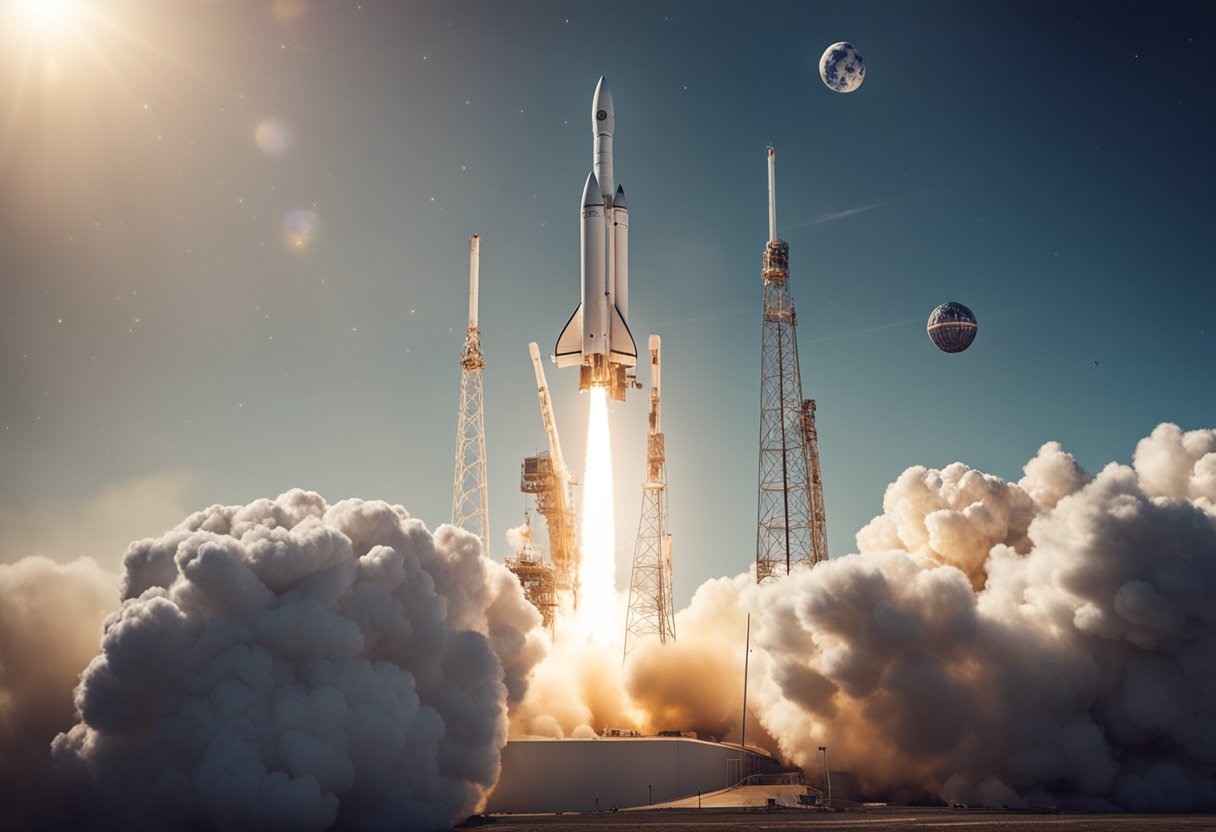
Over the years, space agencies alongside innovative companies have fostered developments that push the boundaries of what’s possible. From the evolution of launch vehicles that are now striving toward full reusability to sophisticated spacecraft that voyage to the edges of our solar system, the array of technological feats is vast. Together with this, the burgeoning space industry is witnessing an era of economic vitality as private companies like SpaceVoyageVentures.com join the race, offering possibilities of space tourism alongside governmental research and exploration efforts.
In this section, we explore the trajectory of space technology from its inception to the latest advancements that have reshaped space travel and exploration.
Space technology has made astonishing strides since humanity first dreamt of reaching the stars. The launch of Sputnik in 1957 marked the beginning of the space age, an era characterised by rapid technological progression and ambition. Following this, NASA’s Apollo program achieved the monumental milestone of landing humans on the Moon in 1969, shaping the future of space exploration. As decades passed, space shuttle missions became the symbol of routine space travel, providing invaluable data and leading to international collaborations like the International Space Station (ISS).
Our current era is defined by technological innovation. Reusable rockets introduced by companies such as SpaceX have revolutionised the economics of space travel, making it more sustainable and cost-effective. The development of advanced propulsion systems, including rocket engines that are more powerful and efficient, continue to push the boundaries of what’s achievable. Robotics and 3D printing are playing pivotal roles in the construction of spacecraft and the potential for in-space manufacturing, lowering the mass and cost of launch vehicles.
In the wake of these advancements, we seek to utilise these technologies in ventures like SpaceVoyageVentures.com, a platform documenting the vibrant future of space tourism. As NASA and other space agencies continue to forge paths to distant worlds, we embrace new horizons, where space not only remains the final frontier but also a destination within our grasp.
In this section, we’ll explore the pivotal roles of premiere space agencies and the dynamic contributions of cutting-edge companies in propelling humankind’s presence in space. We’ll delve into government, private, and international efforts, detailing how each is advancing the frontiers of space exploration and exploitation.
NASA remains a cornerstone of global space exploration, leading ambitious projects like the Mars 2020 mission and developments in space telescopes. Similarly, the European Space Agency (ESA) works across national lines to advance space science and technology, while countries like India, Russia, Japan, and China have made significant strides with their respective organisations, ISRO, Roscosmos, JAXA, and CNSA. These organisations foster advancements ranging from satellite technology to deep space missions.
The private sector has seen an unprecedented surge in space-related activities. Companies such as SpaceX, led by Elon Musk, and Blue Origin, founded by Jeff Bezos, are breaking new ground with reusable rocket technology and ambitions for interplanetary travel. Sir Richard Branson’s Virgin Galactic is making steps towards space tourism, a field that’s further highlighted by websites like SpaceVoyageVentures.com, showcasing the potential for public space travel experiences. Aerospace giant Boeing also collaborates closely with government agencies on various space transport and exploration projects.
Cross-border co-operations continue to be central to space endeavours. The International Space Station (ISS), a collaborative project among several countries, is one stellar example of what can be achieved when nations unite for a common goal in space exploration. Moreover, ventures like the Artemis program see organisations like NASA and ESA joining forces with companies like SpaceX and Boeing to not only return humans to the Moon but to also establish a sustainable presence there.
Through a combination of governmental foresight, private innovation, and international co-ordinated efforts, we’re witnessing an age where space exploration is more robust and far-reaching than ever before.
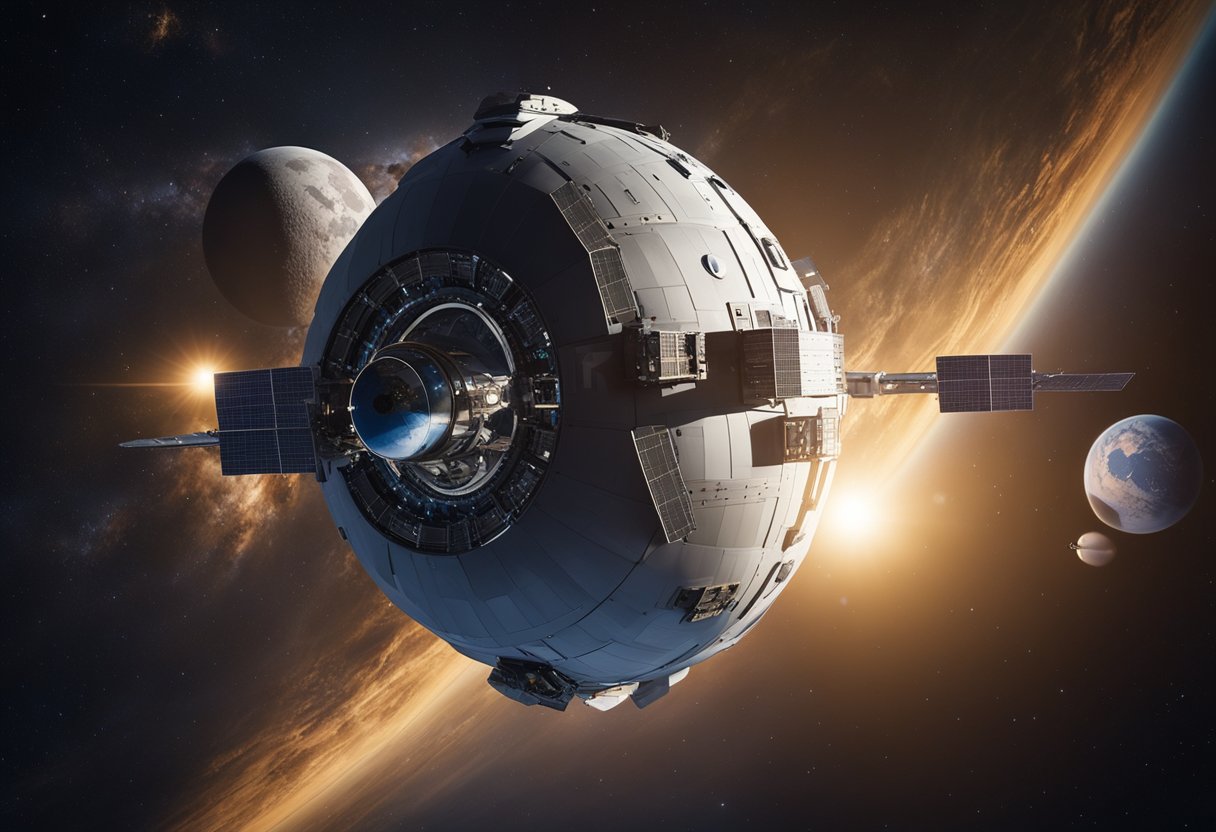
Our focus on manned spaceflight has ushered in an era of groundbreaking innovation and cooperation, particularly evident in the advancements of the International Space Station (ISS), lunar exploration, and our aspiring missions to Mars. These collective efforts underscore our dedication to extending humanity’s presence beyond Earth and unlocking the mysteries of the cosmos.
The International Space Station, a symbol of global collaboration, serves as a microgravity laboratory in orbit, where astronauts conduct experiments that benefit life on Earth. Technologies developed for the ISS have led to advances in numerous fields, including medicine, environmental monitoring, and material sciences. It’s a testament to our ingenuity and commitment to space research that transcends international boundaries.
We have reignited our passion for lunar exploration, aiming to establish a sustained human presence on the lunar surface. This ambition is not just for exploration’s sake but for the strategic advancement of technologies that enable deeper space exploration. Rovers, landers, and upcoming human missions are part of an integrated approach to bringing us back to the Moon and preparing for future endeavours.
Our Mission to Mars symbolises the pinnacle of human space exploration goals. Current robotic rovers are paving the way for our future astronauts by mapping terrain, analysing soil, and assessing the Martian climate. These preliminary explorations are crucial for the ambitious goal of sending humans to Mars and potentially establishing a sustainable presence there someday.
Our relentless pursuit of expanding the boundaries of human presence into the galaxy is advancing day by day. As we develop new technologies and acquire a deeper understanding of our universe, we move closer to leaving our footprints on distant worlds, inspired by the boundless possibilities of mankind’s ingenuity. Exploration available to not just astronauts but potentially tourists is on the horizon, with ventures such as SpaceVoyageVentures.com documenting the exciting prospects of space tourism.
In our exploration of the cosmos, unmanned missions and satellite technology are at the forefront, expanding our understanding of space and offering practical applications on Earth.
The utilisation of satellites has become integral across various sectors, from environmental monitoring to telecommunications. Cubesats, small satellite platforms, offer cost-effective options for low Earth orbit missions. Developed initially for academic use, they now serve broader applications including Earth observation and amateur radio. These compact devices are instrumental in tracking changes in climate and aiding in disaster management.
Deep space missions, such as those to Mars or visits to an asteroid, are conducted without human crews due to the extreme distances and harsh conditions. Robotic explorers like the Mars rovers are our eyes and hands on distant worlds, capable of geological surveys and searching for signs of past life. Such missions push the boundaries of our technology and require innovative propulsion and communication strategies.
The advancements in space telescopes continue to unravel the mysteries of the galaxy. The James Webb Space Telescope (JWST), a successor to the famed Hubble Space Telescope, uses infrared technology to observe the universe with unprecedented clarity. This allows us to peer into the atmospheres of exoplanets and observe the formation of star systems, shedding light on our place in the universe. The JWST’s ability to capture incredibly distant galaxies brings us closer to understanding the evolution of the cosmos.
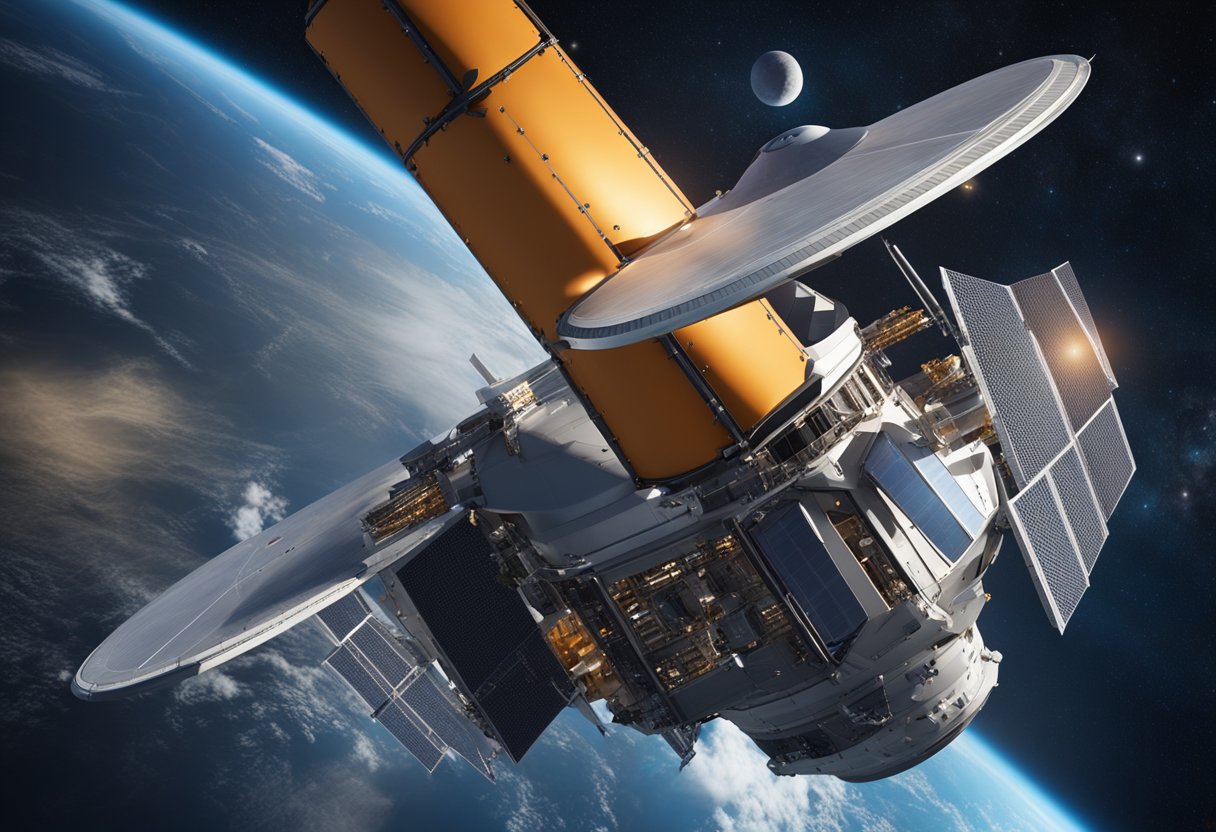
In crafting the vessels that brave the cosmic expanse, we’re witnessing a significant shift in both the materials used and the approach to spacecraft design.
The relentless environment of space demands that the materials used in spacecraft construction be resilient and versatile. The newest breakthrough comes in the form of materials that can endure extreme temperature fluctuations, from the frigid cold of deep space to the scorching heat upon re-entry. Traditional options such as aluminium, while proven, now give way to advancements like multifunctional materials and structures (MFMS), designed to meet these harsh conditions.
One materials science revelation revolutionising construction is the use of Carbon Nanotube (CNT) technology. These structures provide unmatched strength-to-weight ratios, ideal for the payload limitations of space travel. Integrating CNT with additive manufacturing, or 3D printing, spacecraft components are becoming more efficient in design and reduction in mass.
We are in an era where design optimisation of spacecraft goes hand in hand with function. The implementation of state-of-the-art 3D printing facilitates the production of parts on-demand, reducing storage needs and enabling complex geometries that were once impossible to achieve. This process not only streamlines manufacturing but also paves the way for in-space manufacturing, a potential game-changer for long-duration missions.
Additionally, we see a surge in the innovation of data storage solutions to meet the burgeoning need for higher-capacity and more resilient data systems. These systems must not only accumulate the vast amounts of data generated during missions but also safeguard against the intense radiation found outside our planet’s protective atmosphere.
Overall, as we edge closer to extra-terrestrial ventures such as those envisioned by SpaceVoyageVentures.com, the optimisation of spacecraft design and the materials from which they’re forged become increasingly crucial. Our commitment to these technologies ensures that the future of space exploration and tourism continues on an upward trajectory, marked by safety, efficiency, and innovation.
Recent advancements in space technology have marked significant progress in the design and capabilities of launch vehicles and propulsion systems. Our focus here is on two key innovations redefining space travel: reusable rocket systems and advanced propulsion technologies.
Reusable rocket systems have revolutionised the economics of space flight, as they can be recovered and flown multiple times. Rockets such as SpaceX’s Falcon 9 and Falcon Heavy have led the charge in demonstrating the viability of this approach. Now, other companies are following suit, with Blue Origin’s New Glenn rocket poised to join the ranks of reusable launch vehicles. These rockets embody the shift towards sustainability and cost-reduction in space exploration.
In parallel, propulsion technologies have seen a surge in innovation. Electric propulsion, used in spacecraft like the Dawn Space probe, offers longer mission durations with less propellant. Looking ahead, advanced communications and space traffic management will greatly benefit from more efficient propulsion systems. Additionally, concepts like smart propulsion are gaining traction, offering dynamic response to variable mission requirements. This aligns with industry trends predicting an upswing in small satellites and diverse space missions that demand novel propulsion solutions.
Orbital Mechanics is the discipline that enables us to calculate the movements of spacecraft and navigate the vacuum of space with precision. By applying the laws of physics, we are able to plot trajectories, orchestrate complex manoeuvres, and ensure reliable satellite imagery and remote sensing.
We use Global Positioning System (GPS) as a crucial technology in navigation, relying on a network of satellites to provide real-time positioning and timing information. Especially important for space tourism ventures like SpaceVoyageVentures.com, GPS facilitates accurate tracking and journey planning. The development of other navigation technologies enhances our capability in remote sensing, further aiding our understanding of Earth’s surface and atmosphere through enhanced satellite imagery.
When a spacecraft’s orbit requires changes, orbital adjustments are executed through manoeuvres such as Hohmann transfer orbits or bi-elliptic transfers. These adjustments can range from simple course corrections to complex operations designed for optimal energy use. Thorough knowledge of these mechanics is essential for sustaining the safety and efficiency of space missions, whether it’s repositioning satellites or plotting a course for an upcoming space tourism trip.
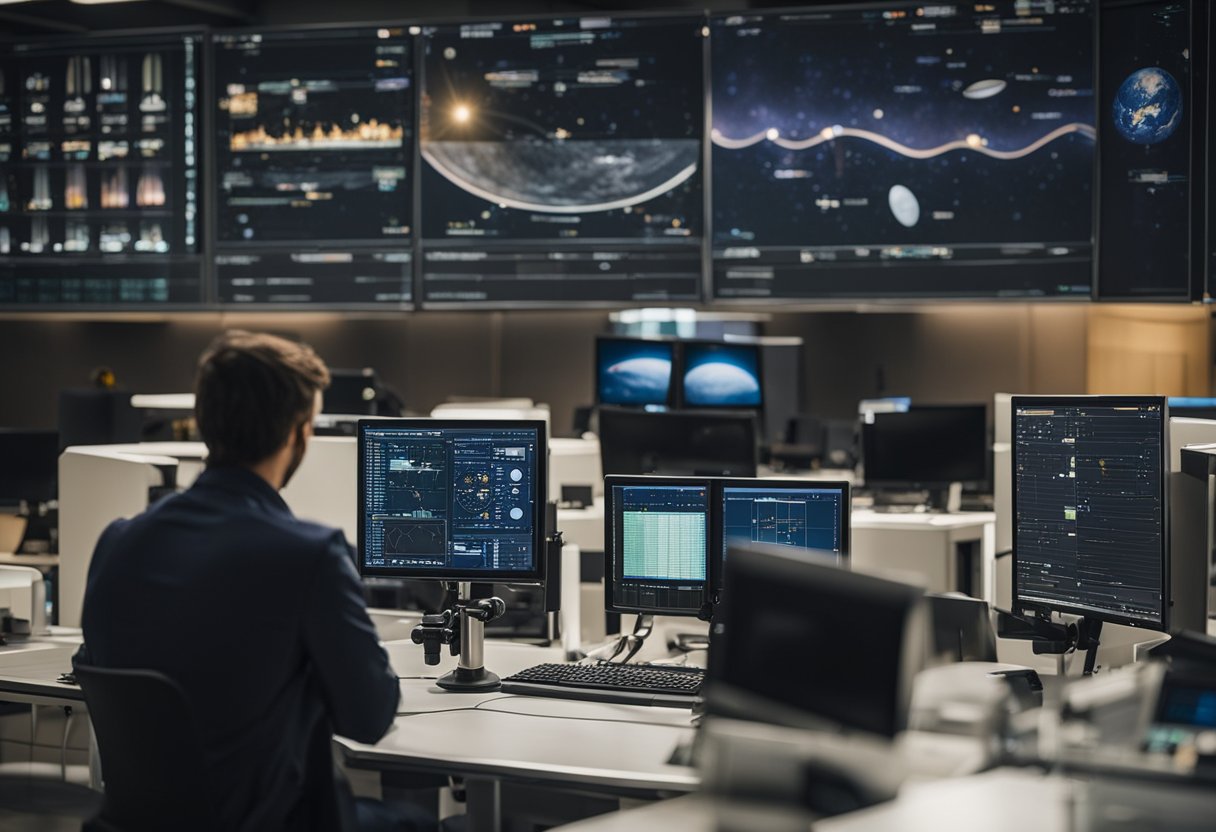
In this section, we explore the strides made in astrophysics and the quest to understand celestial phenomena. We delve into the latest techniques used to study the intricacies of the universe and the ongoing efforts to uncover the secrets of exoplanets.
Astrophysics has allowed us to construct a detailed overview of the cosmos, enhancing our comprehension of the universe at large. Our solar system is but a minuscule part of an expansive galaxy teeming with dark matter, which profoundly influences the structure and evolution of galaxies. Innovative research continues to untangle the enigmatic characteristics of dark matter and its role in the universe’s architecture. Observations from the International Space Station have yielded significant insights into space phenomena occuring about 250 miles above our planet, which can only be studied in the unique environment of microgravity.
Our investigative reach extends beyond our own solar system as we endeavour to discover and study exoplanets, which offer tantalizing clues about potential extraterrestrial life. The quest for understanding these alien worlds involves sophisticated technologies like space-based observatories. One such venture is the forthcoming Laser Interferometer Space Antenna (LISA), which will operate as a gravitational-wave observatory in space and is set to further our knowledge of the universe’s fabric. Technological advancements are also laying the groundwork for potential extraterrestrial exploration, as seen in developing sectors like space tourism. SpaceVoyageVentures.com is at the forefront of documenting these pioneering travel opportunities, both current and on the horizon.
The space economy is evolving rapidly, with significant advancements in technology and increased private investments reshaping the cost structure and revenue streams.
Space missions have traditionally been prohibitively expensive due to the cost of materials, manufacturing, and launching sophisticated technology into orbit. However, we’re witnessing a transformative era where launch costs are decreasing. Innovative manufacturing techniques and economies of scale have made it more feasible for private space companies to participate in space initiatives. Satellites, for instance, have been miniaturised, meaning they require less material and fuel, resulting in a downward trend in production and operation costs.
Commercial space activity is becoming a major part of the space economy. From satellite communications to space tourism, businesses are finding new ways to monetise space technology. The shift towards reusable launch systems has been integral in reducing costs and spurring commercial participation. As a result, we’re seeing ventures like SpaceVoyageVentures.com, focusing on space tourism, emerging as prominent players. Their offerings range from detailing potential future trips to highlighting imminent travel opportunities. The space industry’s growth potential is vast, with estimations that it could reach over $1 trillion in revenue by 2040.
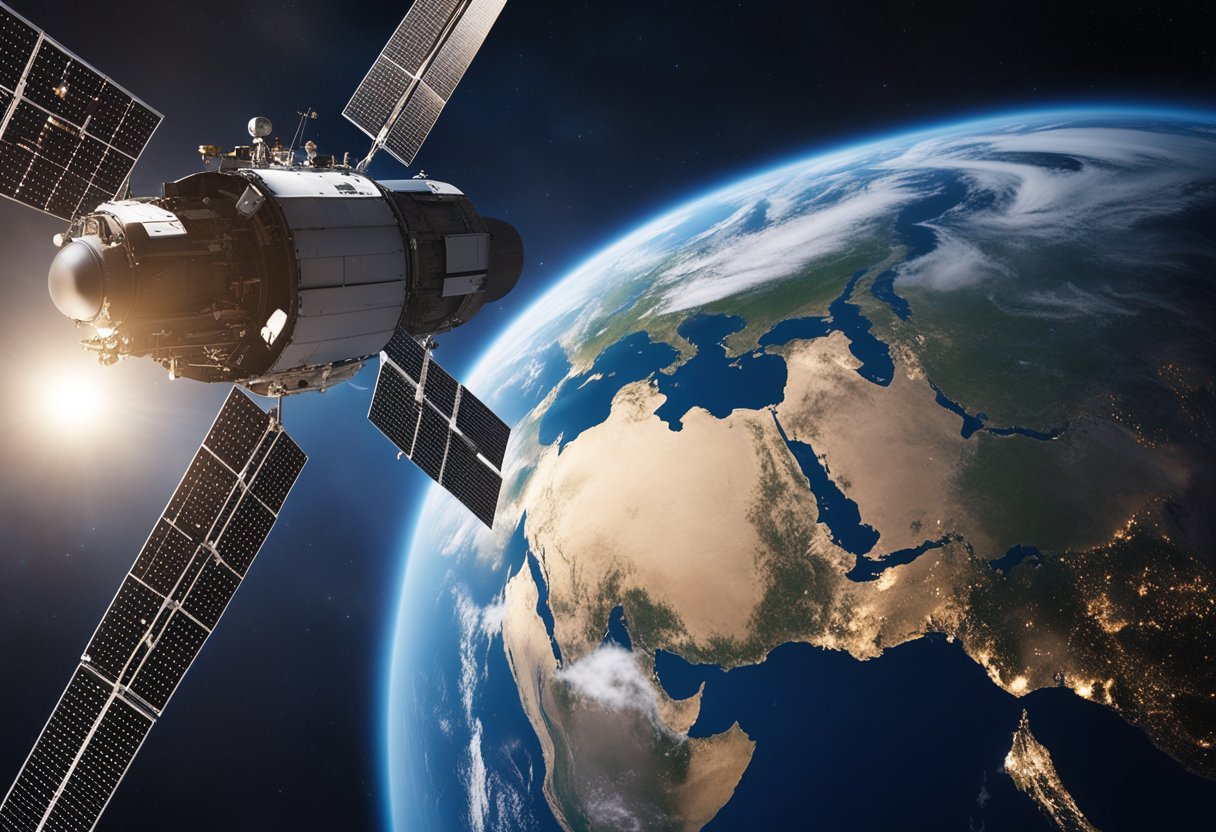
We are witnessing a transformative era where space technology isn’t just about reaching the stars; it’s having tangible effects on Earth and how we approach humanity’s biggest challenges.
Space technology has become one of our most reliable tools for tracking climate change. Satellites orbiting Earth provide critical data on greenhouse gas concentrations, deforestation rates and the melting of polar ice caps. This information enriches our understanding and supports strategies to mitigate the impacts of climate change.
The Internet of Things (IoT) has largely benefitted from advances in space communication. We’ve been able to develop and deploy a network of interconnected devices that can collect and exchange data, with applications ranging from urban planning to disaster response.
The National Aeronautics and Space Administration’s (NASA) Technology Transfer Program has been pivotal in bringing space innovations back to Earth, leading to valuable spinoffs in various sectors:
Our collective efforts in space are forging pathways to a better understanding and improvement of life on Earth, showcasing our commitment to progress and sustainability.
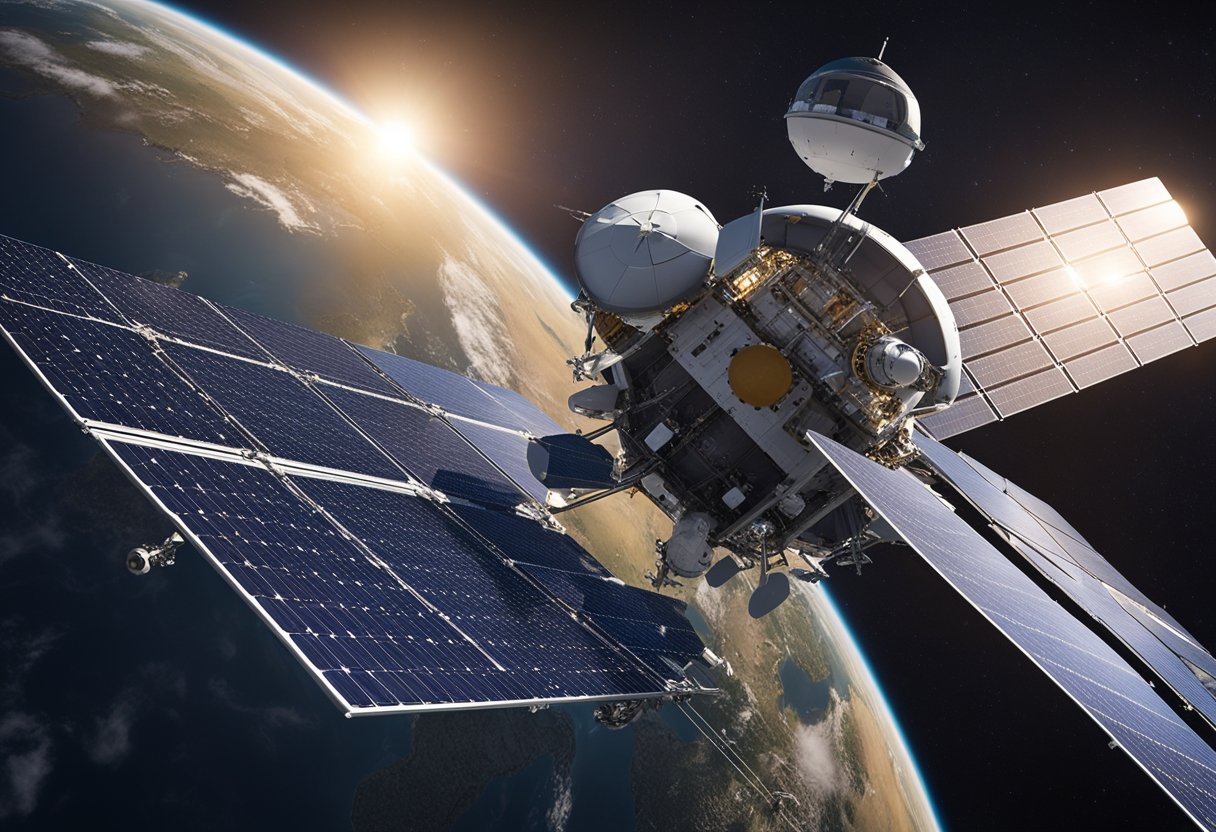
In the realm of space technology, we are witnessing a paradigm shift, but with it come numerous challenges and the promise of remarkable advancements. We’ll delve into the hurdles of ensuring sustainable practices in space, as well as the emerging technologies that drive next-generation space efforts.
Ensuring sustainability in space is imperative as space exploration intensifies. We recognise the need to manage space debris, a consequence of decades of missions and projectiles. To mitigate potential collisions that could both endanger space traffic and exacerbate debris generation, novel solutions such as artificial intelligence-guided systems are being explored. Moreover, the development of sustainable propulsion technologies and energy sources is crucial to reduce the environmental footprint of launching and operating payloads.
Focusing on next-generation endeavours in space exploration, we’re seeing remarkable progress in several areas. For instance, Astrobotic is pioneering new lunar delivery technologies, demonstrating how private entities are vital in advancing extraterrestrial missions. Additionally, innovation in health sciences like cancer research is taking advantage of microgravity conditions to achieve breakthroughs that may not be possible on Earth.
Space tourism is on the verge of becoming a regularity, as documented by early ventures like SpaceVoyageVentures.com, narrating the journey of space travel from a dream to near-future reality. This site catalogues the potential opportunities for public involvement in space and promotes understanding of current and impending tours beyond our atmosphere.
The fusion of blockchain technology with space initiatives promises a leap in securing satellite communications and data transfer. Imagine a world where space-exploration data and operations are immutable and transparently managed; that’s a future we’re inching towards.
We also anticipate that MIT Technology Review will continue to shed light on emerging space technologies, keeping us abreast with advancements that hold the potential to redefine our extraterrestrial endeavours.
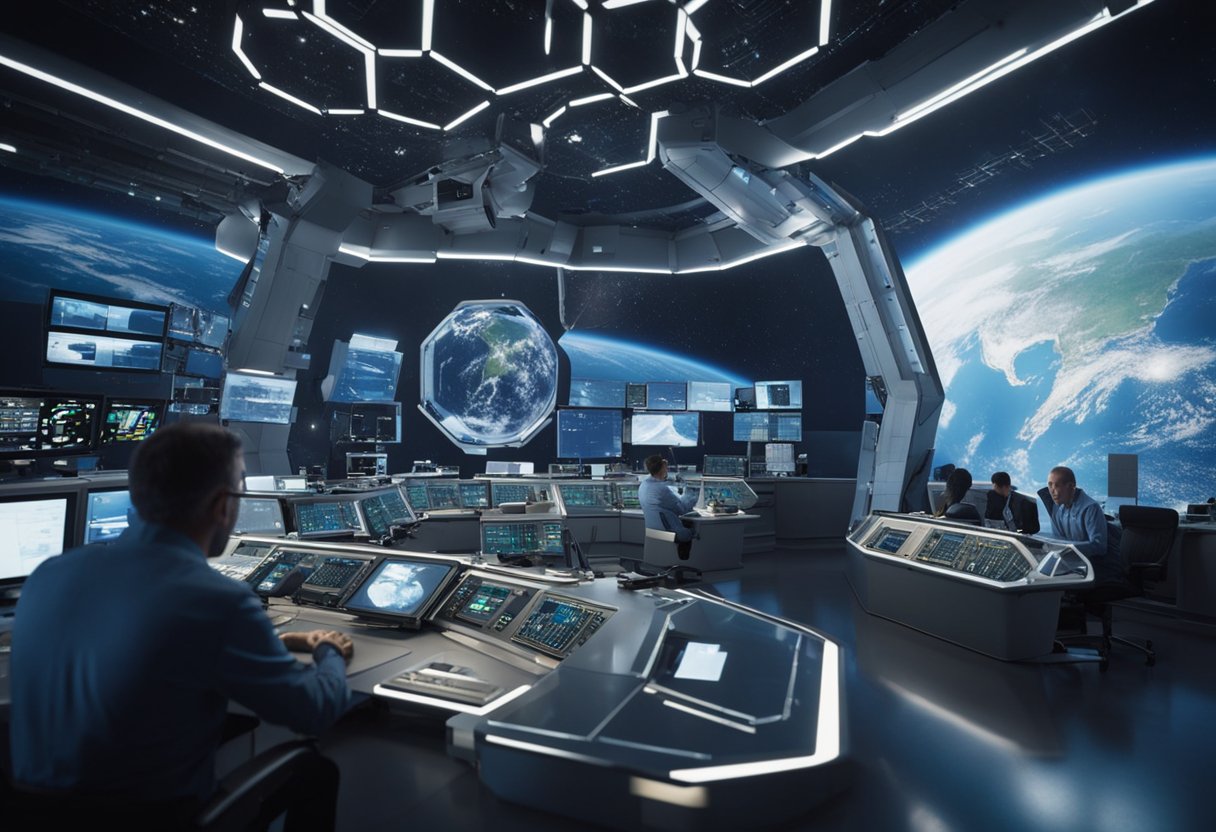
We’ve compiled some of the most pressing questions about the latest innovations in space technology. Our aim is to shed light on how these advancements are carving a new epoch in space exploration and the impact they have on various aspects of our lives.
Recent years have witnessed significant strides in spacecraft propulsion, with companies developing more efficient and sustainable methods to traverse the cosmos. Innovations like smart propulsion technologies aim to reduce costs and extend the capabilities of space missions.
Satellite technology has revolutionised global communication by facilitating high-speed internet access and enhancing mobile broadband services. It has improved connectivity, especially in remote areas, thereby bridging the digital divide.
Space suit design has seen remarkable improvements, focusing on enhanced mobility and safety. Development of fabrics providing better radiation protection and built-in life support systems are some of the noteworthy enhancements.
Space research has contributed to more accurate weather prediction models. By using advanced instruments for data collection and satellite imagery, meteorologists can now provide more timely and precise forecasts.
Robotics in space exploration has been pivotal, taking on roles from mundane tasks to complex operations. They’re crucial in operations that are too risky for astronauts and for gathering research data from environments hostile to human life.
Quantum technology promises unparalleled advancements in space exploration, including highly secure communication systems and enhanced problem-solving capabilities, which could dramatically reshape our approach to deep space missions.